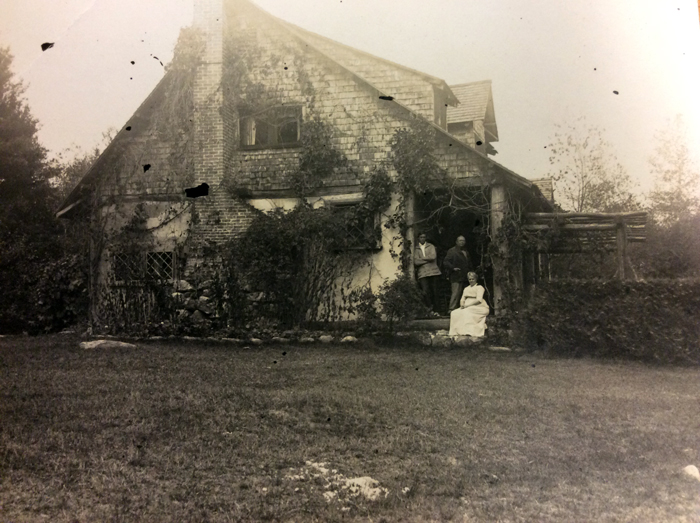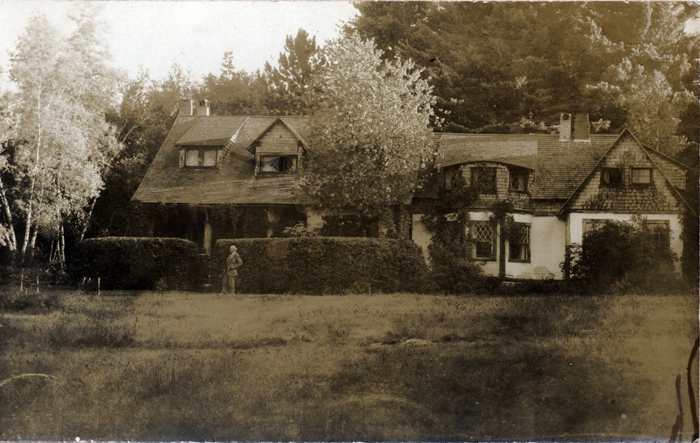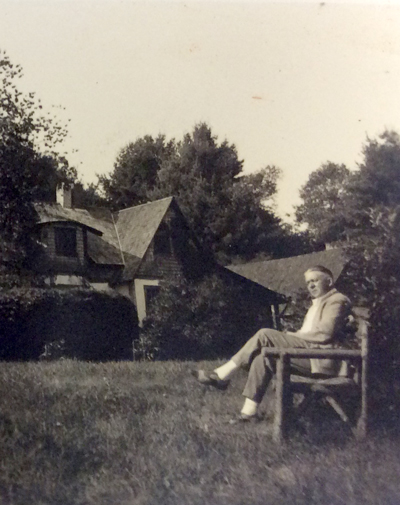History



Douglas Volk (23 February 1856–1935) was an American portrait and landscape painter. His work can be found in most American collections, including the Carnegie Museum, the Corcoran Gallery, the Pittsfield Museum, the National Museum, the Metropolitan Museum of Art, the Portland Museum of Art and other places. He taught at Cooper Union, the New York Art Students League, and the National Academy of Design in New York City. He also taught at the Society for Ethical Culture established by Felix Adler and lectured for Bowdoin College’s 1927 Bowdoin Institute of Art. He was a founder of the Minneapolis School of Fine Art, now known as the Minneapolis College of Art and Design. He participated in the 1893 Chicago Columbian Exposition and won his first major award there. Volk became noted for his figure and portrait paintings. He was elected to the National Academy of Design in 1899.
Volk married artist Marion Larrabee, an instructor for the Minneapolis School of Fine Art. In 1880 Douglas Volk brought a group of Cooper Union students to the Sebago Lake region. He returned in the 1890s to look for a summer rental. His friends George deForest Brush and Percival Chubb stayed in the Lovell area and it is thought they were the ones to inspire the Volks to settle there. By the turn of the century, Marion Volk had started to work on traditional area looms to weave textiles and rugs. Rather than using cotton, she became known for her hand-woven woolen work, created with her daughter Marion Volk Bridges. As part of a communal effort with residents of Lovell Centre, they made what were collectively known as Sabatos Rugs and Textiles and the Sabatos Handicraft Society. They hand-dyed the wools with fruit and vegetable dyes, such as apple tree bark, goldenrod, barberry, St. John’s Wort and madder root. Their designs were based on motifs from Native American art. Their son Wendell Volk, a printmaker and woodcarver, made a hand printed treatise on the Sabatos work from his hand presses and created silkscreen prints for the wool designs.
Marion Volk jointly purchased the old Charles Hamblen farm with Carrie Stow Waite, a friend from New Jersey, in 1898. They divided the property in 1901 and Marion added onto her parcel to create a lot of about 25 acres. The Volks renovated the house and added to it, calling it Hewnoaks. They eventually built four more cottages and an artist’s studio for Douglas, with space for their artist friends and craftspeople. Numerous people came to study with them over the years, and they had a wide network of friends among artists of the Arts and Crafts Movement. Among them were J. Alden Weir, Frank Benson, John Calvin Stevens, Childe Hassam, Steven Douglas, William Merritt Chase, John Scott Bradstreet, Felix Adler, and the Swedish woodcarver Karl A. von Rydingsvärd and his American wife, the former Annie Mary Brown. (In 1906 Von Rydingsärd was awarded the Life Membership prize of the National Society of Craftsmen.)
The Volk family held the large property for 100 years. Jessie McCoig Volk, Wendell’s widow, was the last to live there. She ran Hewnoaks as a tourist camp from the 1950s until her death; many summer visitors’ first introduction to Kezar lake was through Jesse and Hewnoaks. After her death in 2005, the property was bequeathed to the University of Maine Foundation and a portion of the family records to the Smithsonian Institution. University officials arranged for an auction of much of the property’s contents and family papers, including art and craft works made by the Volks and art from their personal collection.
Recent History
Before Jessie Volk died she requested the University of Maine Foundation “use (the) real estate in a state consistent with the current use of such real estate, to preserve the natural beauty thereof and to use such real estate for educational research, including, in particular, uses related to (the) study and promotion of art,” for at least the first 15 years. In the spring of 2012 an ad hoc group came together to create an artist residency in support of Jessie Volk’s vision. During the summer of 2012, 13 artists were invited to come to Hewnoaks to pursue their creative endeavors. In 2013, in response to the success of the previous summer, Hewnoaks was formalized into a non-profit organization and initiated its current independently-juried application process and its mission “to give artists time and space to create within a natural, rustic environment.” In 2014, the IRS approved the Hewnoaks Artist Colony as a 501(c)3 tax exempt organization. The colony has been funded by in-kind contributions from The University of Maine Foundation, by private donations, and, in 2014, by grants from the Stephen and Tabitha King Foundation and the Quimby Family Foundation.
All photos: Maine State Museum
